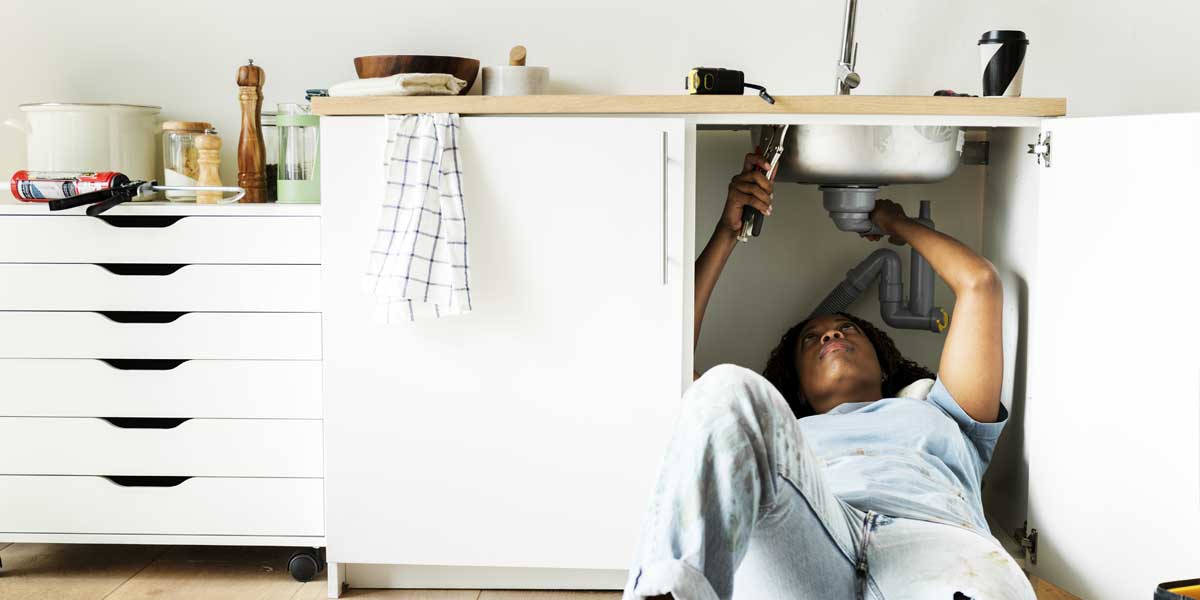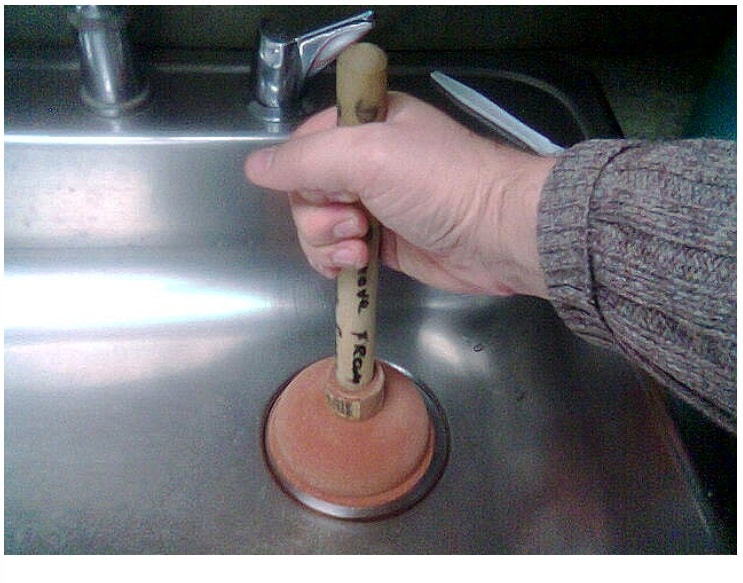Mastering the Art of DIY Kitchen Sink Unclogging: 5 Secrets
Mastering the Art of DIY Kitchen Sink Unclogging: 5 Secrets
Blog Article
How do you actually feel when it comes to DIY Plumbing Fixes?

In this write-up, we will be looking at 5 simple steps you can require to release your kitchen area sink from clogs and also save you from the discomfort and also humiliation of dealing with a stopped up kitchen sink.
Blocked kitchen sinks are among one of the most common drain concerns property owners encounter. And also what's more, it's a extremely uneasy and also unpleasant view. Visualize going to the sink to do your dishes and finding out that the drain is clogged and water can not flow down easily.
Most clogged drainages are brought on by food particles, fat, oil, and soap particles. They obstruct the sink as well as make it hard for water to go down the drainpipe promptly. While it is appealing to put a call through to the plumbings, there are a few DIY hacks you can try initially prior to making that call.
1. Sodium Bicarbonate and Vinegar
In contrast to utilizing any type of kind of chemicals or bleach, this approach is much safer and also not damaging to you or your sink. Baking soda and vinegar are daily residence things utilized for many other points, and also they can do the method to your kitchen sink.
Firstly, eliminate any type of water that is left in the sink with a mug.
Then put an excellent quantity of cooking soft drink down the drain.
Pour in one mug of vinegar.
Seal the water drainage opening and also permit it to go for some minutes.
Pour hot water down the drain to melt away various other persistent residue as well as particles.
Following this easy method can work, as well as you can have your kitchen sink back. Repeat the procedure as long as you deem necessary to clear the sink of this debris entirely.
2. Attempt a Plunger
You can try using a plunger if the problem is not from the rubbish disposal. Plungers are conventional residence tools for this celebration, and they can can be found in useful if you utilize them properly. A flat-bottomed plunger is most ideal for this, but you can use what you have is a toilet plunger.
Comply with the list below simple steps to utilize the plunger successfully:
Secure the drainpipe with a dustcloth and fill the sink with some hot water
Place the plunger in position over the drain and begin diving
Check to see if the water runs openly after a couple of dives
Repeat the process up until the drain is totally free
3. Maybe it's the Garbage Disposal
In many instances, the obstruction might be due to a blockage in the disposal. Use pliers rather.
You can check out the adhering to option to unclog your cooking area sink if this does not work.
4. Make use of a Hanger
Using a wire towel wall mount or a plumber's snake if you have one can do the trick. All you need do is correct the wall mount to go down the drain while you meticulously choose out the particles causing the clog.
Run warm water down the tubes hereafter to see exactly how successful you were.
5. Usage Boiling Water
When confronted with a blocked sink, the first thing you must attempt is to put boiling thin down the drainpipe. That is about the most straightforward remedy to blocked sinks as well as drains. Boiling water assists reduce the effects of the bits and also particles triggering the obstruction, particularly if it's soap, grease, or oil fragments, as well as in most cases, it can flush it all down, as well as your sink will certainly be back to typical.
Do not try this approach if you have plastic pipes (PVC) because warm water might thaw the lines and also trigger even more damage. You may want to stick to using a bettor to obtain particles out if you utilize plastic pipes.
Using this technique, turn on the faucet to see exactly how water moves after putting hot water down the drain. Attempt the procedure once more if the clog lingers. The clog might be a lot more persistent in some cases and call for even more than just boiling water.
Final Words
Attempting these few methods might conserve you the costs of having a plumber check it. Yet in most cases, a plumber is what we require. In cases where you find it tough to unblock the sink even after trying all these methods, it may be time to leave it to the experts.
Get in touch with specialist plumbing firms to repair your water drainage troubles and also various other various household plumbing requirements.
Obstructed kitchen area sinks are one of the most usual drain problems homeowners encounter. Picture going to the sink to do your meals and also discovering out that the drainpipe is clogged as well as water can not stream down quickly.
They obstruct the sink as well as make it hard for water to go down the drainpipe swiftly. When encountered with a stopped up sink, the very first thing you ought to try is to put boiling water down the drainpipe. Boiling water assists reduce the effects of the bits and particles triggering the obstruction, specifically if it's oil, oil, or soap bits, and also in numerous instances, it can flush it all down, as well as your sink will certainly be back to normal.
How to Unclog a Kitchen Sink
Take the Plunge
Start your efforts by plunging. Use a plunger with a large rubber bell and a sturdy handle. Before getting to work on the drain, clamp the drain line to the dishwasher. If you don t close the line, plunging could force dirty water into the dishwasher.
Fill the sink with several inches of water. This ensures a good seal over the drain.
If you have a double sink, plug the other drain with a wet rag or strainer.
Insert the plunger at an angle, making sure water, not air, fills the bell.
Plunge forcefully several times. Pop off the plunger.
Repeat plunging and popping several times until the water drains.Clean the Trap
The P-trap is the curved pipe under the sink. The trap arm is the straight pipe that attaches to the P-trap and runs to the drain stub-out on the wall. Grease and debris can block this section of pipe. Here s how to unclog a kitchen sink by cleaning out the trap:
Remove as much standing water from the sink as possible.
Place a bucket under the pipe to catch the water as it drains.
Unscrew the slip nuts at both ends of the P-trap. Use slip-joint pliers and work carefully to avoid damaging the pipes or fasteners.
If you find a clog, remove it. Reassemble the trap.
If the P-trap isn t clogged, remove the trap arm and look for clogs there. Run the tip of a screwdriver into the drain stub-out to fetch nearby gunk.Spin the Auger
With the trap disassembled, you re ready to crank the auger down the drain line.
Pull a 12-inch length of cable from the auger and tighten the setscrew.
Insert the auger into the drain line, easing it into the pipe.
Feed the cable into the line until you feel an obstruction. Pull out more cable if you need to.
If you come to a clog, crank and push the cable until you feel it break through. The cable will lose tension when this happens.
Crank counterclockwise to pull out the cable, catching the grime and debris with a rag as the cable retracts.

I'm just very enthusiastic about Do It Yourself Plumbing Solutions and I hope you liked my blog posting. Are you aware of somebody who is fascinated about the niche? Why not promote it. Thanks for going through it.
For best results, ring! Report this page